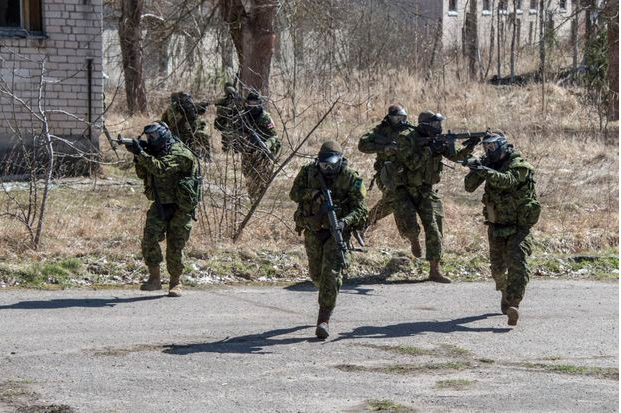By Scott Taylor
The results of a recent survey show that the Canadian military has a serious image problem in that the majority of the population are unaware that they even exist. According to the findings of an extensive poll conducted by the Earnscliffe Strategy Group, fewer than 26 percent of Canadians felt that they had some awareness of what the Canadian Armed Forces had been doing in the previous year, while only 42 percent considered themselves to be “somewhat familiar” with Canada’s recent military activity.
An astounding 58% admitted to having little to zero knowledge of what our troops are doing around the globe, or on domestic operations. The level of ignorance was particularly high among the younger generations.
For those in uniform, these stats must come as quite a shock as just twelve short years ago the Canadian soldier was named “newsmaker of the year” by Canadian Press as the result of the almost continuous mainstream media coverage of Canada’s military intervention in Afghanistan.
Of course the Colonel Blimps, tub-thumpers and rabid warmongers out there, still lament the fact that Canada ‘cut and ran’ from the doomed NATO campaign in Afghanistan back in 2014. However, all of the recent news out of that failed state would indicate that the U.S. led forces are no closer to a victory parade a full four years after we cut our losses.
That said, the dearth of media coverage for our troops must not be blamed on a shortage of deployments. In fact, we have so many current operations that it is difficult to even keep track without a scorecard.
To wit, we already have a total of eight helicopters and 250 personnel deployed to assist the UN peacekeeping mission in Mali. The initial commitment is for twelve months, but no one in their right mind thinks that the deeply rooted conflict issues of Mali will be resolved within that limited timeframe. At present, Mali is considered the most dangerous of all UN peacekeeping missions.
Then we have our battle group, which has been based in Latvia since the summer of 2017. Originally 450 strong, that number has recently been bumped up to 540 personnel, and the commitment extended until 2023.
Ostensibly this forward presence of our combat troops - in conjunction with a number of NATO allies - is to keep Russia from invading the Baltic states of Lithuania, Estonia and Latvia.
However, as all three of those nations are full-fledged members of the NATO alliance, and as article five of the NATO Charter assures members of a collective defence, there is no actual need for us to provide a ‘tripwire’ deterrent in Latvia. The Latvia commitment is simply adding stress through extended separation to the families of 540 soldiers – not to mention the $400 million incremental deployment cost per year that could be put to better use improving domestic infrastructure on Canadian bases.
Then there is Iraq. It was announced in July that Canada would be sending 250 personnel and four helicopters to assist in a NATO training mission, which will begin this fall and last an initial twelve months. This force will be in addition to the approximately 120 Special Forces soldiers and four helicopters already deployed to Iraq.
No one can quite explain what these elite solders are still doing in Iraq since they were originally sent in to train Kurds to fight Daesh (aka ISIS or ISIL). Once Daesh was defeated last October, the Canadian trained Kurds began fighting Iraq’s security forces. Somewhat embarrassingly, it is a unified Iraq – not an independent Kurdistan, which Canada officially supports. As for us helping to train more young Iraqis to kill, do not expect that to secure peace in Iraq by 2019.
We also have 200 trainers in Ukraine, the frigate HMCS Ville de Quebec deployed with the NATO squadron and we are sending five CF-18 fighter jets and 150 personnel to Romania as part of our overall effort to keep the big bad Russian genie in the bottle.
All told, that is a lot of forward deployed troops for the majority of the Canadian public not to be aware of. But as they say in the media business “If it bleeds, it leads” and it was the 158 dead and over 2000 wounded in Afghanistan that made our military the top topic at the water cooler.
I, for one, hope that the present trend of obscurity continues, and our soldiers remain safe.


